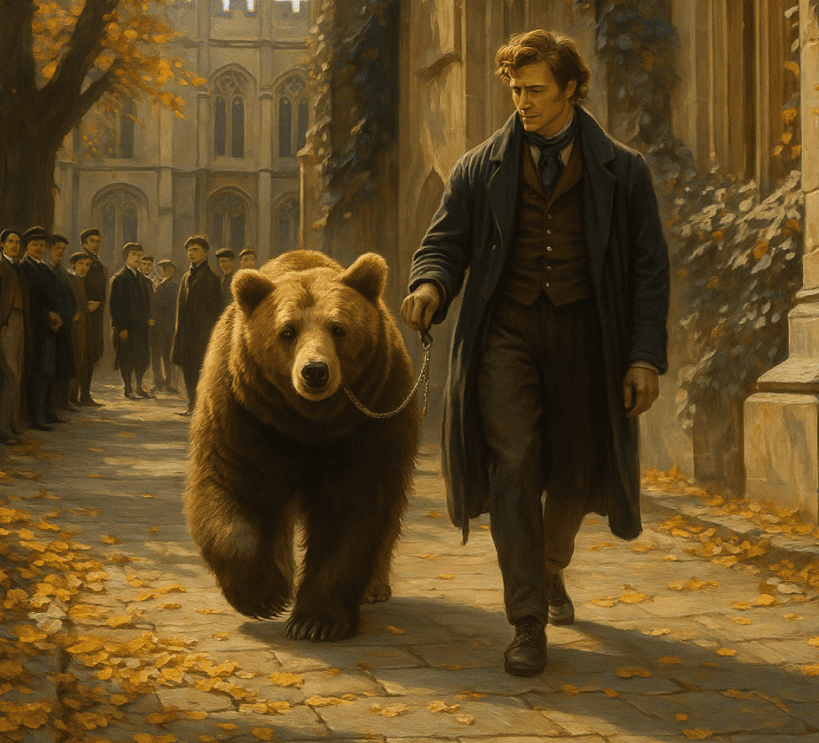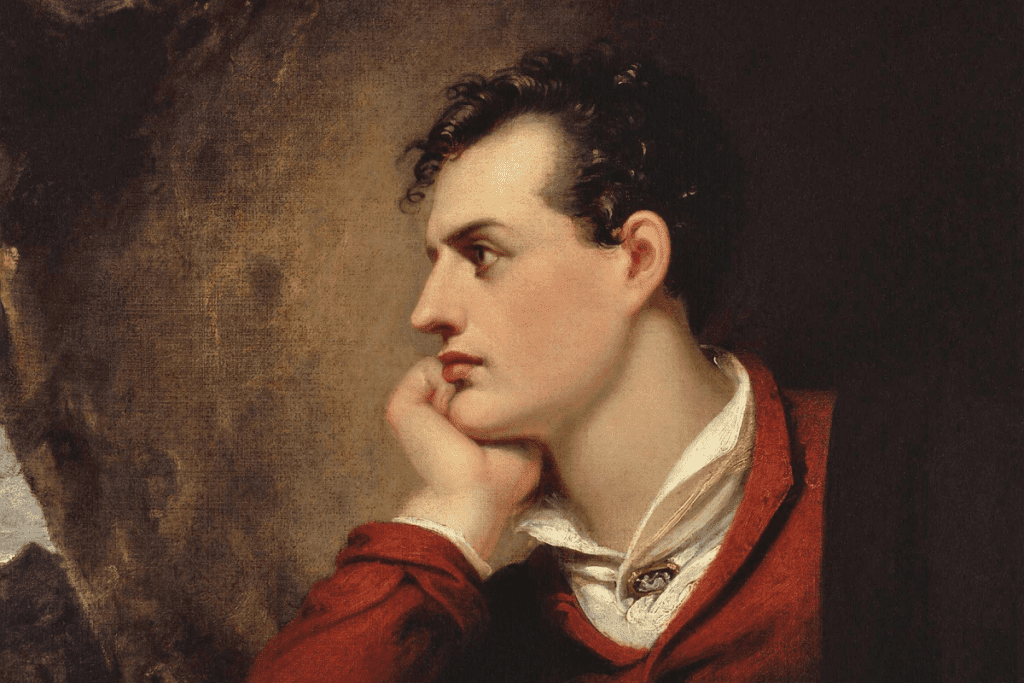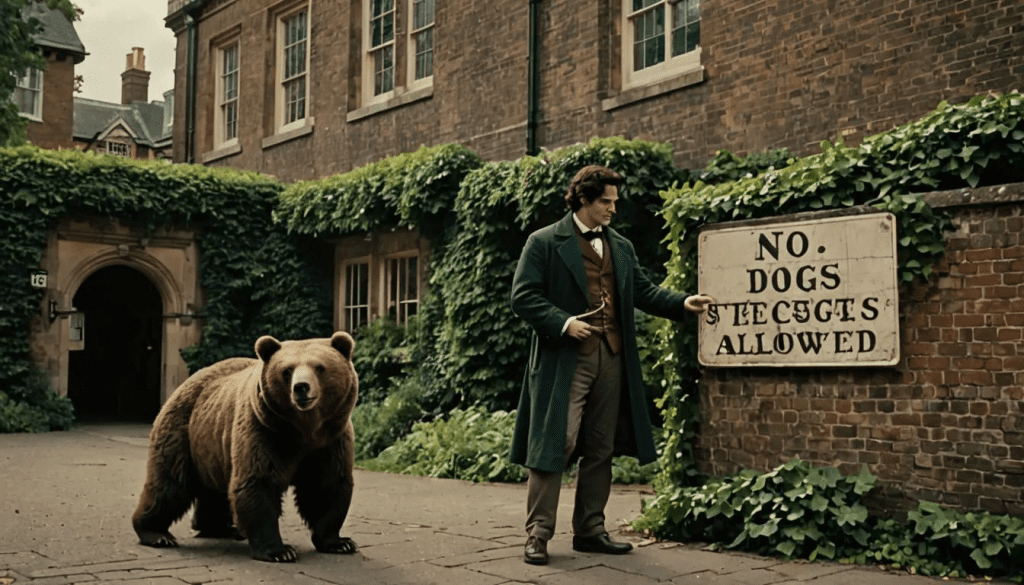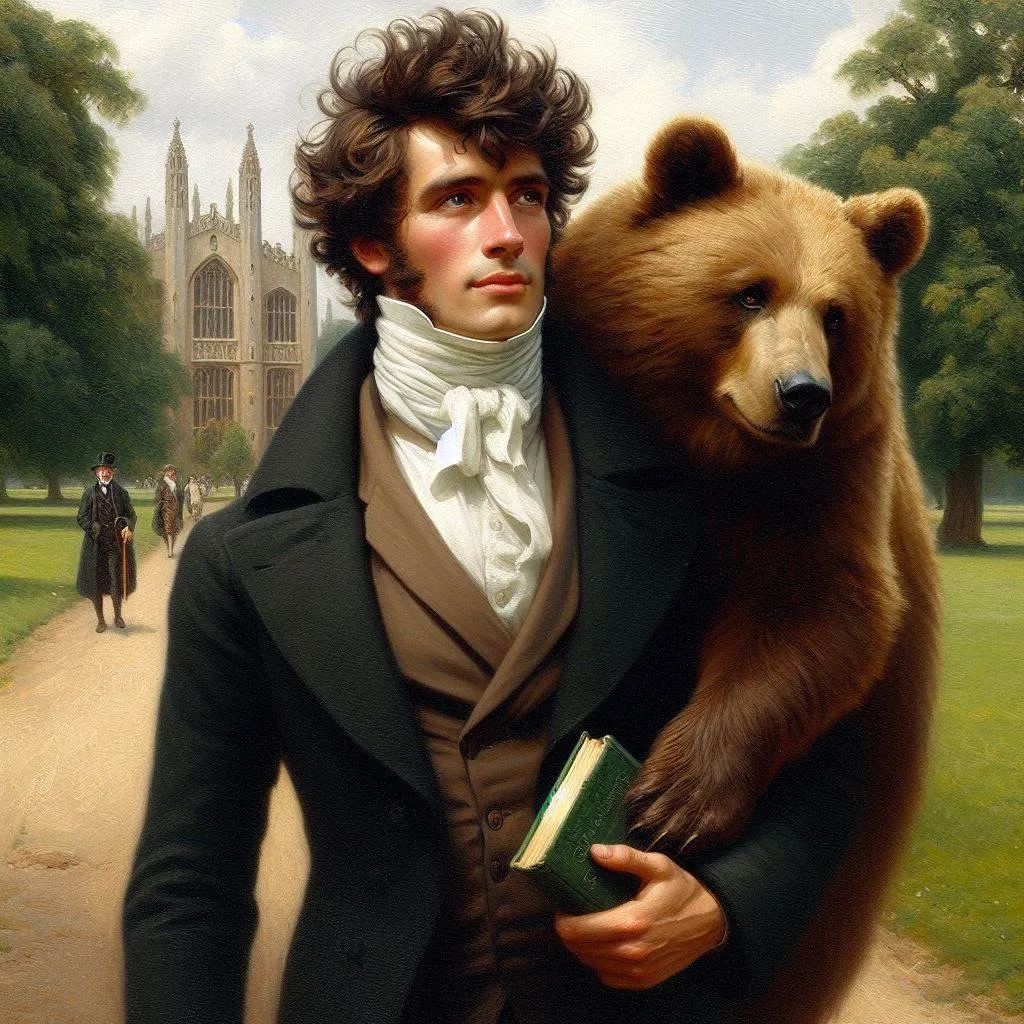In the early 1800s, Cambridge University wasn’t quite known for its sense of humor. Among its many strict rules was one that banned students from keeping dogs in college. But where most students might have accepted the policy or perhaps smuggled in a pup Lord Byron, the romantic poet with a taste for the outrageous, had other ideas.
He didn’t just push the rules. He found a loophole so brilliant it turned him into a legend.

A Poet With a Wild Streak
Before he was a literary icon, George Gordon Byron, better known as Lord Byron, was already making waves as a student. Enrolled at Trinity College, Cambridge, he quickly gained a reputation for wit, drama, and a flair for the unconventional.
But when he discovered the college’s ban on dogs, he was deeply irritated. Byron loved animals. He had a deep affection for them, often saying they were more loyal and sincere than most humans. So naturally, he wasn’t about to go pet-less.

Enter: The Bear
Instead of writing a letter of protest or organizing a student rebellion, Byron took a different route: he bought a bear.
Yes, a real bear.
He acquired the animal most likely a young one from a traveling menagerie or private collector. Since the university rulebook specifically banned dogs, but made no mention of bears, he saw a clear path forward.
Video:
Lord Byron and His Unusual Pet Bear: A Rebellious Tale
Byron kept the bear in his dorm room, walking it on a leash around campus as if it were the most natural thing in the world. When questioned by college authorities, Byron coolly pointed out that no rules had been broken. There was no official policy against bears, after all.
A Calm Bear on Campus
Remarkably, there’s no record of the bear attacking anyone or causing chaos. In fact, the creature reportedly behaved quite well under Byron’s care. The image of a nobleman poet strolling the grounds of Trinity College with a bear on a leash became the stuff of instant legend.
It wasn’t just a prank. It was a statement, a form of rebellion by technicality, and a showcase of Byron’s unmatched ability to challenge convention with charm and daring.

An Ongoing Legacy
Lord Byron’s bear has since become one of the most famous anecdotes in the university’s long history. It’s not just about a rule-breaking student it’s about creativity, protest, and the power of wit.
The story has been retold in biographies, poems, and historical accounts. Some even say Byron petitioned to enroll the bear as a student at the university a detail that may be apocryphal, but fits his rebellious spirit.
Video:
Lord Byron: Mad, Bad, and Dangerous to Know
More than two centuries later, this tale still resonates. In a world often bound by bureaucracy and tradition, Byron’s bear reminds us that the most memorable revolutions don’t always need violence or loud slogans sometimes, all it takes is a well-placed loophole and a little courage to be absurd.
The Moral of the Bear
Byron didn’t change the rules at Cambridge, but he sure challenged them. And in doing so, he proved that imagination, audacity, and a touch of mischief can turn even the driest rulebook into an opportunity for greatness.
Because sometimes, when they say “no dogs allowed,” the right answer isn’t to argue.
It’s to bring a bear.



